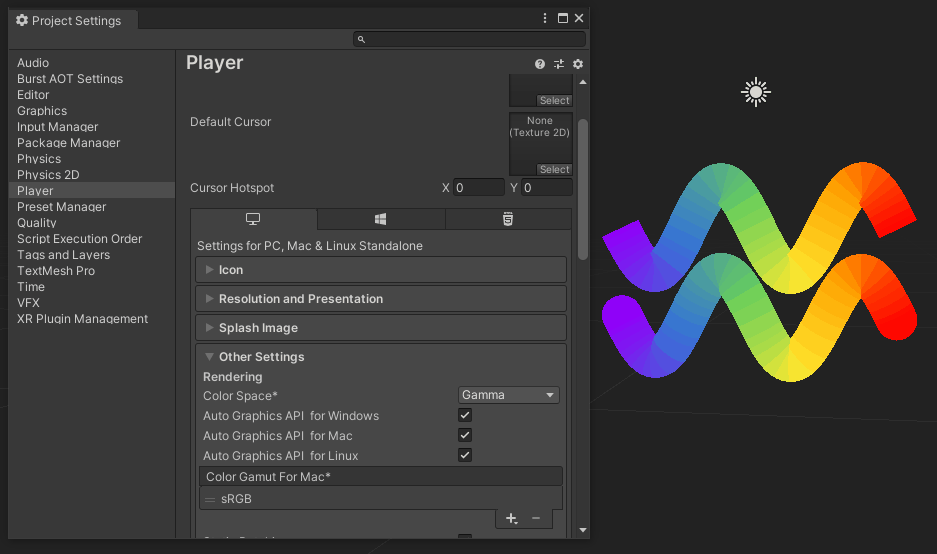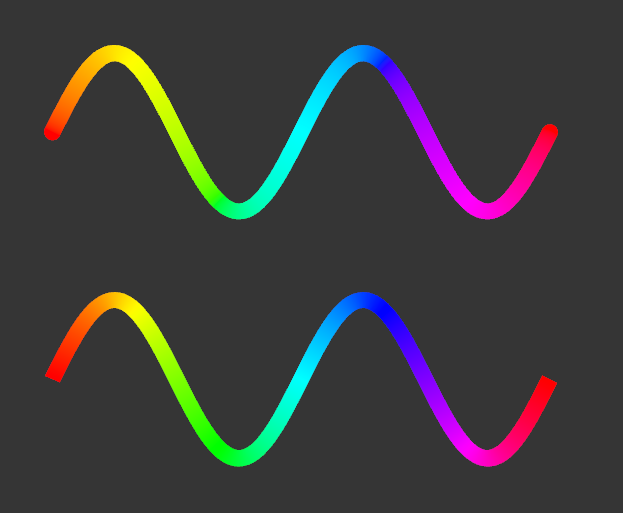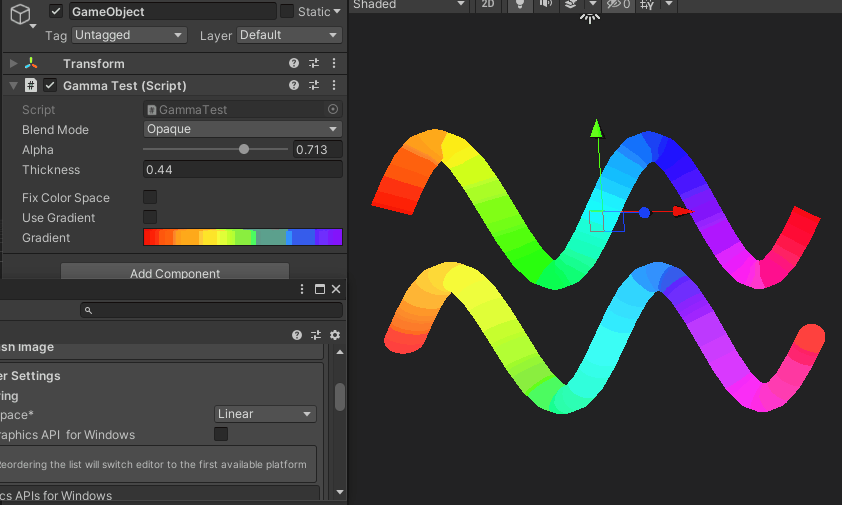Draw.Line vs Draw.Polyline Linear Colorspace inconsistency
Once again I'm comparing Draw.Line and Draw.Polyline in Immediate Mode using the Built in render pipeline.
If the Project's Color space is set to 'Gamma' then Draw.Line and Draw.Polyline appear identical when provided with the same inputs.
However when the Project's color space is set to 'Linear' then Draw.Line appears different from how it did in Gamma space - more desaturated, while Draw.Polyline appears unchanged:

It appears as if Draw.Lines does not properly convert the gamma-space color to linear space.
This is verified by manually converting the color before drawing:
// ...
Draw.Line(fromPoint, toPoint, thickness, FixGammaColor(fromColor), FixGammaColor(toColor));
// ...
private static Color FixGammaColor(Color color)
=> QualitySettings.activeColorSpace == ColorSpace.Linear ? color.linear : color;
Which results in Draw.Lines behaving like Draw.Polyline does where switching the space does not make any difference.




this has now been fixed in 3.2.0